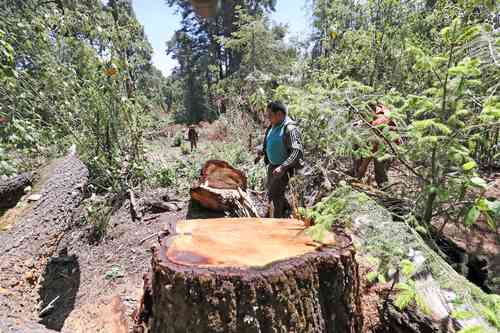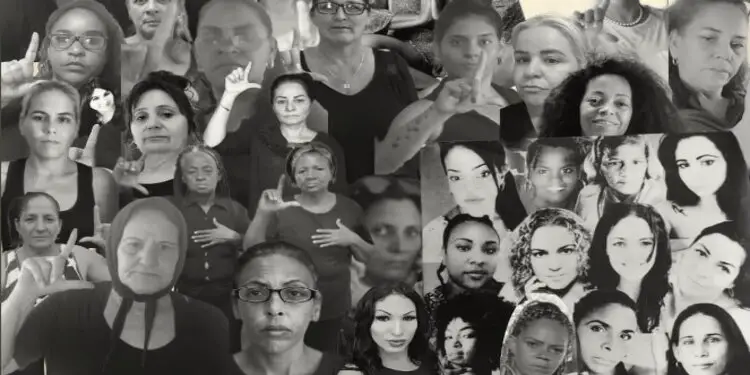▲ Community members of Santa Ana Tlacotenco, in Milpa Alta, visit and monitor the Tepetlehualo and Cuactzontla areas in order to preserve their forests and avoid clandestine activities. Photo Luis CastilloPhoto Luis Castillo
Angelica Enciso L.
Newspaper La Jornada
Tuesday March 7, 2023, p. 3
Community forest management in Mexico, which consists of the ejidos and communities establishing a management plan endorsed by the authorities to conserve, take advantage of and obtain benefits from forests and jungles, has been for several decades a unique model of success in the world. . Now it is threatened by organized crime that has infiltrated communities and some have even stopped operating, with which a drop in the country’s timber production is expected for the next few years, experts warn.
The history of these communities goes back to when, during the government of Luis Echeverría, great initiatives emerged to promote community management, but it was after legal reforms in 1986 when it was recognized that the only ones who could take advantage of their forest resources were the ejidos and communities, landowners, says David Bray, a scholar of these communities at Florida International University.
Of the 16 thousand 944 ejidos and communities that exist in forest areas –where 12 million people live– there are 2 thousand 361 that make use of forestry and own 4.1 million hectares, 16 percent of the forests and jungles of the country and contribute 70 percent of national forestry production, indicate data from the National Forestry Commission (Conafor).
Of these communities, close to a thousand have community forestry companies (EFCs) to carry out everything from felling the trees to processing the wood with sawmills and furniture factories. In the communities, not all the forest area is used, since the management programs endorsed by Conafor define the conditions and are authorized for a decade; each year the community members take advantage of an area and return to it after 10 years.
There are successful EFCs and many have decades of work. They conserve their forests, use them sustainably and deliver some level of benefits to their communities
some of them unusual in the field, such as pensions, stresses David Bray.
In an interview, he adds that in forest areas there are generally few jobs, but when a forest of thousands of hectares is used, the community members obtain reasonable payments and investments in the community, such as health services, computers for schools or drinking water systems.
Mexico has such a scale of surface used under this scheme that makes it a unique case; The reforms from the federal government have been important at different times, including presidential interventions, and above all the energy, vigor and importance of promoting the communities. In many cases, the government opened spaces from above, and the communities knew how to take them over, occupy them, and demand more from them.
adds Bray.
Most of the CFEs are in pine and oak forests, the most important states are Chihuahua, Durango, Guerrero, the state of Mexico, Michoacán, Puebla and Oaxaca, while Quintana Roo and Campeche prevail in community management of tropical forests.
crime infiltration
But not everything is utopian, says Bray. There are many problems. With communities trying to run market oriented businesses there can be internal problems. Some have said that excessive regulation by the government is something that prevents the development of the sector, but I would say that the most important factor that affects it is organized crime.
says the also author of the book Community forestry companies in Mexico: success in the commons and the seeds of a good Anthropocene.
It emphasizes that the situation varies according to the state, it is not in the whole country, it is reported that crime, with allies in the communities, takes over companies. There are other cases where companies have to pay their protection fee in regions that are dominated by crime.
.
In EFC of Oaxaca or Quintana Roo there is not much presence of organized crime, it is stronger in northern forest states; this would be from 2005, but the problem began to be more serious from 2010, he explains.
Many of the communities and ejidos that have authorized forest management are in areas where there is a presence of organized crime, they have interventions in their activities, there are collections of land rights and there are regions where crime has appropriated the production process, practically controlling it
alert Salvador Anta, from the Mexican Civil Council for Sustainable Forestry (CCMSS), in an interview.
Where they have to coexist with organized crime, ejidos and communities have to organize themselves to adequately carry out their productive activities
, manifest. There were exemplary cases that even had international FSC certification for their good forest management, such as the Barranca del Calabozo case, in Jalisco, but they lost it and organized crime now controls productive activity. The full benefits no longer reach the communities, he points out.
Crime has taken over the forest regions. Something similar happened in Guerrero, there are ejidos, such as the Cordón Grande, that continue to do things, in a scenario of violence, conflicts and armed crime groups
says.
Even this would lead in the coming years to a decrease in the volumes of national production. We have the capacity to produce more, but only 30 percent of national consumption is generated, community management is around 80 percent, the rest would be from small owners in Chihuahua, Durango, and Oaxaca, who have eight to 50 hectares. in which they take advantage of forest areas
clarifies.

















